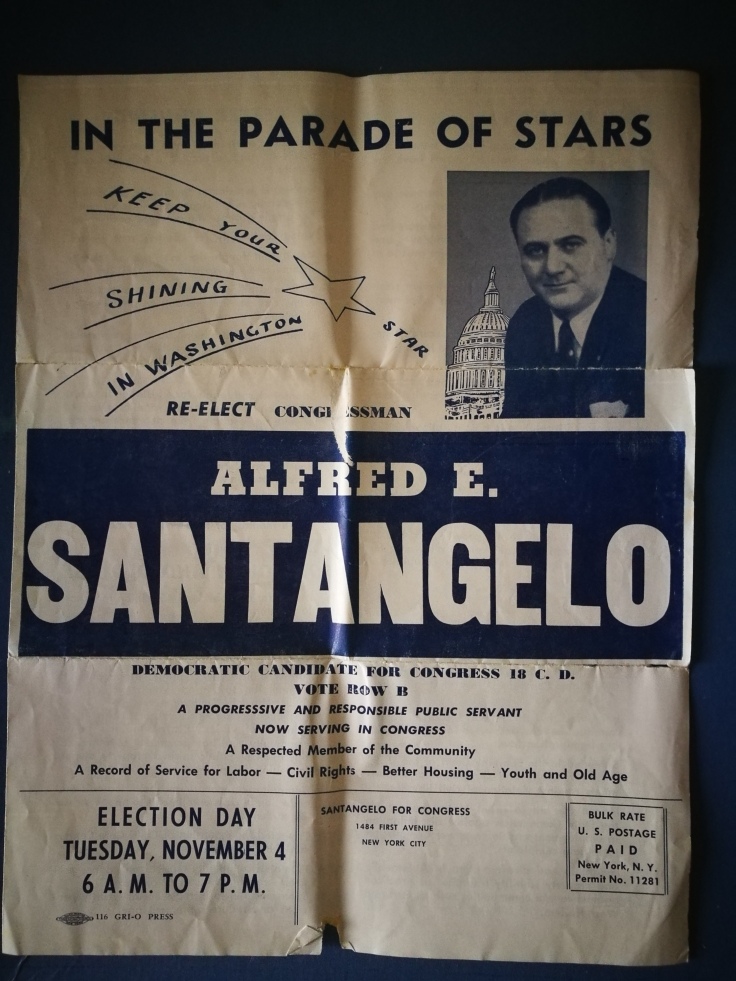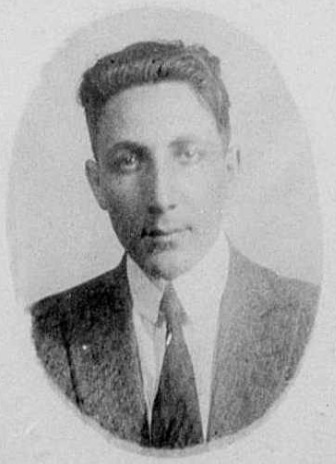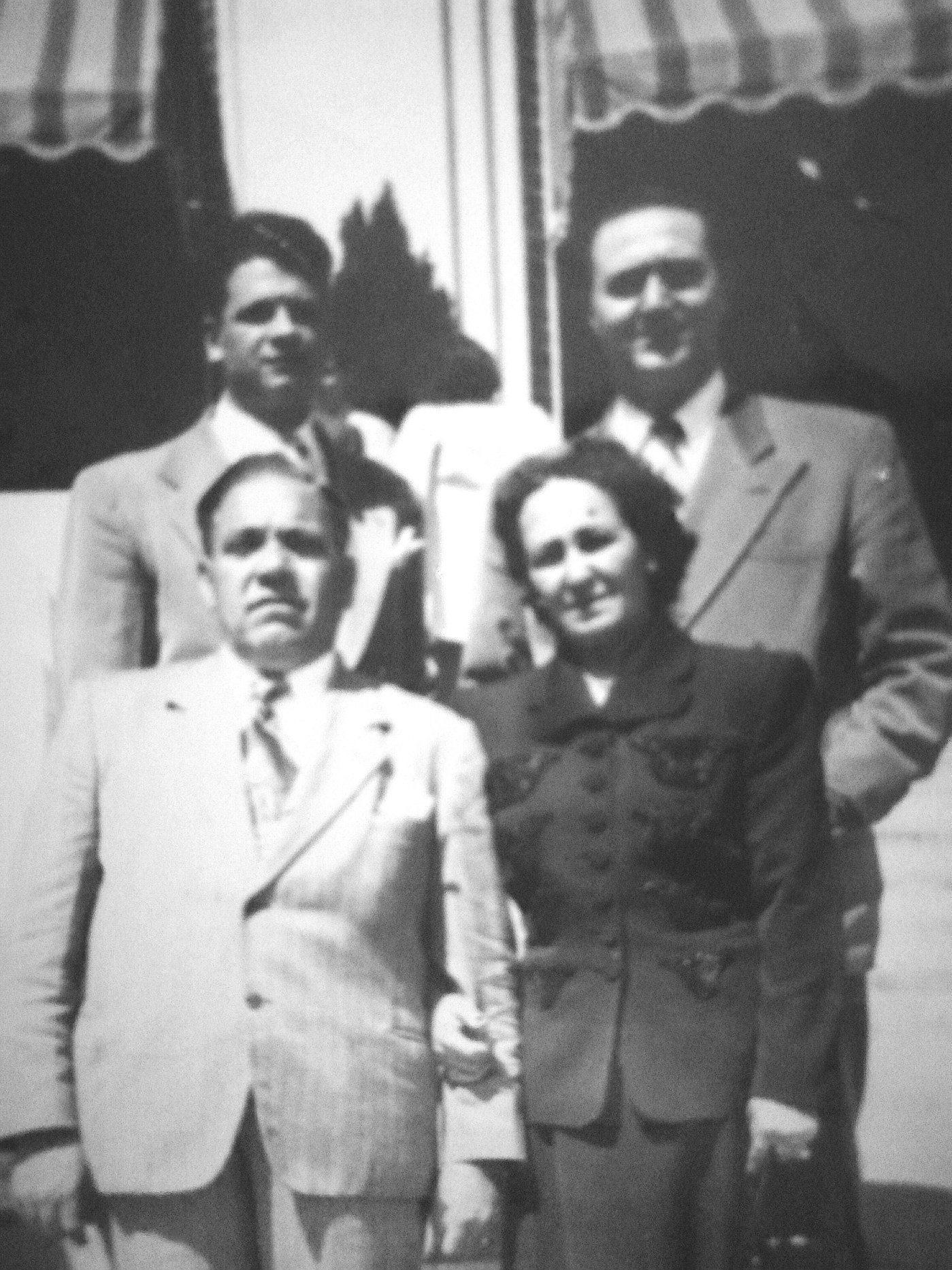Joseph Gagliano, who was known by the nickname “Pip the Blind,” was called “the mastermind of one of the biggest opium rings in the country” by the assistant district attorney who prosecuted him for narcotics trafficking in 1946.

It would be easy to assume that Joseph, whose family was from Corleone, was related to Tommy Gagliano, boss of the Lucchese crime family. In fact, Pip the Blind is of no known blood relation to Tommy Gagliano. They are distantly related through marriage. (The links in this paragraph go to Wikitree, the repository of the vast majority of my genealogical research into the families of Corleone. There are primary sources documenting all of the relationships; they’re in the profiles.)
Another easy—but wrong—guess would be that Joseph and Tommy Gagliano are somehow related to “Fat Frank” Gagliano and his son, Joseph, both made members of Carlos Marcello’s Mafia Family in New Orleans. The NOLA Gaglianos are from Porto Empedocle, on the southern coast of Sicily, and of no close relation to any of the New York Gaglianos mentioned here.
With all of the red herrings that suggest who Joseph Gagliano was, his relative importance, and where his power came from, it’s easy to miss the real story. In fact, everywhere I look in Joseph’s biography, there are close ties to power. The web of Gagliano-Rao family connections tie the diminutive-sounding Pip the Blind to the highest echelons of political power in New York: to Mayor La Guardia, and even to FDR.
Joseph Gagliano’s closest criminal relation, his uncle Angelo, met Joseph’s family when they got off the boat from Sicily: the SS Sicilian Prince, in 1905. Nine years later, Angelo Gagliano employed a young Jack Dragna at his laundry. In those years, both Gagliano families lived on and around the same block of East 107th Street. Angelo’s early associates included Steve LaSalle and Vincent Rao, who would become his son-in-law.
“Pip” was born 18 February 1903 in Corleone as Giuseppe Gagliano, the son of Vincenzo Gagliano and Marianna Ortoleva. When Giuseppe was not much more than a baby, his family emigrated to the United States, joining his uncle in East Harlem. Vincent Gagliano soon found work as a plasterer. By 1915, the family lived in the apartment at 220 East 107th Street that would be Pip’s home until the day he died, in 1947.
***
In a 1950s “true crime” radio show called “The Silent Men,” Douglas Fairbanks, Jr. plays the roles of undercover officers in dramatic reenactions of real investigations. One episode from 1951 is “The Empire of Pip the Blind,” in which Fairbanks’ narcotics detective pretends to be a heroin wholesaler from San Francisco, visiting New York in order to establish a relationship with kingpin “John Bartello,” also known as “Pip the Blind.” A backstory is invented for his nickname: that the blind spot in his eye is called a “pip.” I suspect the real origin of “Pip” is “Giuseppino,” the diminutive for “Giuseppe.”
Through his mother, Marianna Ortoleva, Joseph Gagliano is the descendant of nobility: he is the third-great grandson of the Baron Don Angelo Cala’. On his father’s side, Vincenzo Gagliano’s grandfather was part of Corleone’s petite bourgeoisie, a master shoemaker.
Pip and his brothers followed their father into the plastering trade. When Vincent died, in 1931, Joseph and his brothers supported their mother and younger siblings. In 1940, four of Marianna’s sons, ranging from Angelo, age 29, to Benny, the oldest, at 45, were all unmarried, still living at home, and working as plasterers.
Building construction wasn’t Joseph Gagliano’s only occupation. He was an early burglary associate of Joe Valachi, and other future members of both the Genovese and Lucchese crime families. At his 1936 arrest for running a lottery on Long Island, Joseph told police he’d been arrested for “every crime under the sun.”
Joseph had other criminal relations in New York. His first cousins Calogero and Vincent Rao were close associates of Lucchese boss and construction racketeer Tommy Gagliano. Gagliano and the Rao brothers grew wealthy together in the construction business. Calogero Rao was an unindicted co-conspirator in Tommy Gagliano’s 1932 tax evasion trial.

Calogero’s daughter, Betty, married Alfred Santangelo, an attorney who was assistant district attorney for New York County for the latter half of Prohibition, and a close associate of Fiorello La Guardia, the “tough on crime” candidate who won the New York City mayoral race with support from Franklin D. Roosevelt, elected president in 1933. The new mayor quickly went after Ciro “the Artichoke King” Terranova: smashing his illegal slot machines for the delighted press, and legislating the monopoly he held on baby artichokes out of existence.
Alfred’s brother George Santangelo, a physician, married another of Calogero Rao’s daughters, Rosalia. A third Santangelo brother, Robert, was Joseph Gagliano’s defense attorney in the narcotics trial that sealed his doom in 1946.

Robert V. Santangelo had a celebrated legal career. In 1921, he was one of the promising Italian-American college students sent on a cultural tour of Italy by Bank of America (which was formerly the Bank of Italy). The passport photo above was taken for this trip. Before retiring, Robert served as a New York Supreme Court judge. When he died in 1984, his obituary named one of his surviving sisters, “Eleanor Roosevelt of Staten Island.” The former First Lady of this name, wife of FDR, died in 1962. So what was the connection? The Santangelo family were wealthy and politically prominent. Their father, Michele, was an immigrant from Potenza, in the Neapolitan region of Italy, and like Tommy Lucchese and Calogero Rao, he was a building contractor. Michele’s daughter Eleanor Santangelo, born in 1915 in Staten Island, married Martin Rosenfelt in 1947. Mr. Rosenfelt died in 1978. Eleanor’s married name was misspelled in her brother’s obituary, leading to the suggestion that the Santangelos had married into not just one, but two of the most notable families of New York.
***
In 1935, a rival lottery gang in Copiague, Suffolk County, New York, tipped off police to Joseph Gagliano’s operation on Long Island. In the resulting raid, not only Joseph, but two of his teenage sisters, and the wives of two of his associates, were also arrested. Gagliano, age 32, was described as a member of the old Schultz gang, a reference to the Bronx bootlegger and policy racketeer, Dutch Schultz.
Based on the 1940 census, in which Joseph is still a single man living at home, and news of his death in 1947, which names his widow, Joseph married some time between 1940 and the end of 1946. His wife, Grace, came to live with Joseph, his mother, and siblings, at 220 East 107th. I have not found his marriage record, or evidence the couple had any children.
Despite their modest address, Gagliano’s illicit wealth and power were so well-known that when he was arrested on narcotics charges in December 1946, his bond was set at $150,000: worth over $2 million today. Four men arrested in connection with Joseph were given bonds of just $15,000 each, while a fifth, in the hospital with a broken leg, was considered not to be a flight risk.
Gagliano and his fellows were charged with selling five ounces of heroin to an informant. Joseph’s lawyer, Robert Santangelo, claimed he was suffering from an incapacitating mental ailment. Pip said that people were poisoning his food. Nonetheless, three psychiatrists agreed that he could stand trial. His prosecutor called him “the mastermind of one of the biggest opium rings in the country.”
Joseph “Pip the Blind” Gagliano, the ringleader of what was one of the largest narcotics trafficking operations on the East Coast, was sentenced to five-to-ten years at Sing Sing. He arranged to be held temporarily in the city, while he had interviews with local prosecutors, to whom he was still considered a valuable potential witness.
On 10 April 1947, Joseph hanged himself in his Bronx jail cell. He was 43.
Sources
Policy Ring Seized In Armed Hide-Out. (1935, July 6). The New York Times. P. 28. Retrieved from https://timesmachine.nytimes.com/timesmachine/1935/07/06/95515143.html?pageNumber=28
Berger, M. (1946, December 21). $150,000 Bail Holds Narcotics Suspect. The New York Times. Pp. 1, 20. Retrieved from https://timesmachine.nytimes.com/timesmachine/1946/12/21/305216962.html?pageNumber=1
Three Found Guilty of Narcotics Sales. (1947, February 20). The New York Times. P. 7. Retrieved from https://timesmachine.nytimes.com/timesmachine/1947/02/20/96692330.html?pageNumber=7
Narcotic Peddler Ends Life In Cell. (1947, April 11). The New York Times. P. 10. Retrieved from https://www.nytimes.com/1947/04/11/archives/narcotic-peddler-ends-life-in-cell-joseph-gagliano-facing-5-to-10.html?searchResultPosition=1
Crook, J. (1984, April 6.) ROBERT SANTANGELO, EX-JUDGE ON THE STATE SUPREME COURT. The New York Times. Section B, Page 5 Retrieved from https://www.nytimes.com/1984/04/06/obituaries/robert-santangelo-ex-judge-on-the-state-supreme-court.html
See Joseph Gagliano’s profile on Wikitree for vital records.
Featured image: Calogero Rao and his wife, Maria Canzoneri, front; Alfred Santangelo, top right
